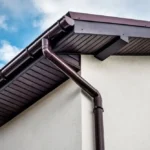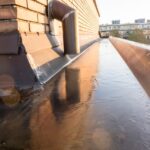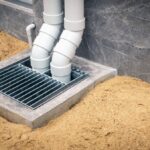As a homeowner, maintaining the structural integrity of your home is crucial. One key aspect of this maintenance involves recognizing the signs your roof needs resealing. Addressing these signs promptly prevents costly repairs down the line. Ensuring your roof is properly sealed not only protects your home from leaks but also extends its lifespan.
In this article, we will delve into the common indicators that signal your roof needs resealing. Understanding these signs helps homeowners take timely action, safeguarding their most significant investment.

Understanding Roof Sealing
Roof sealing is a protective coating applied to prolong the roof’s life. It serves as a barrier against harsh weather conditions, UV rays, and potential leaks. Regular inspection ensures the seal remains intact, offering reliable protection.
Why Your Roof Seal is Important
A well-sealed roof prevents water infiltration, which can lead to extensive damage. Furthermore, it helps in maintaining insulation efficiency, reducing energy costs. Proper sealing minimizes the need for frequent repairs, making it economical in the long run.
Signs Your Roof Needs Resealing
1. Visible Cracks and Holes
One of the most apparent signs your roof needs resealing is the presence of visible cracks or holes. These can occur due to weather wear, natural aging, or improper installation. Addressing them promptly is essential to prevent further damage.
2. Water Stains Inside the Home
Yellow or brown stains on ceilings and walls are indicators of a leaking roof. This problem, often stemming from inadequate sealing, requires immediate attention to avert extensive water damage.
3. Mold and Mildew Growth
Mold and mildew result from prolonged moisture exposure. If you notice these within your home, it may signify your roof’s sealing is compromised. These growths pose health risks and necessitate quick intervention.
4. Peeling and Blistering Paint
Exterior paint peeling or blistering can signal that moisture is pushing outwards from your roof. This is a clear indicator that resealing is necessary to prevent further water ingress.
5. Increased Energy Bills
A sudden spike in energy bills could imply your roof’s seal is deteriorating. As a result, your home’s insulation efficiency decreases, causing the HVAC system to work harder and increase energy consumption.
How Often Should You Reseal Your Roof?
Typically, roofs need resealing every five to ten years, depending on the material and environmental conditions. However, regular inspections are critical to identify any underlying issues that require immediate attention.
Resealing Flat Roofs
Flat roofs, which are prone to water pooling, may need more frequent resealing. Regular inspections help detect vulnerabilities early, ensuring the roof’s longevity.
Climate Considerations
Local climate affects how often you should reseal. Homes in harsh climates may require more frequent maintenance. Weather patterns, such as intense sun or heavy rainfall, play a significant role in the seal’s lifespan.
DIY vs. Professional Roof Resealing
While some homeowners opt for DIY resealing, hiring professionals offers expertise and quality assurance. Professionals can identify and address less obvious issues, ensuring comprehensive treatment.
Roof Maintenance Tips
Regular roof maintenance can prevent the necessity for frequent resealing. Keeping gutters clean, checking for damages post-storms, and addressing issues immediately help maintain roof integrity.
Cost of Resealing Your Roof
The cost of resealing varies based on factors such as roof size, material, and location. It’s a worthwhile investment considering the protection it offers against costly repairs.
When to Contact a Professional
If you observe multiple warning signs, it’s time to contact a professional. They can provide a thorough inspection and recommend the best course of action.
Preventive Measures
Take preventive measures by scheduling regular inspections and addressing minor issues promptly. Proper maintenance is key to avoiding major problems in the future.
Conclusion
Recognizing the signs your roof needs resealing enables homeowners to take timely action. Regular maintenance and inspections play a critical role in ensuring your home stays protected. For more insights on extending roof life or cleaning roof shingles, visit our additional resources.

FAQs
1. How can I maintain my roof to avoid resealing?
Regular inspections and cleaning gutters (learn more on gutter maintenance) can help maintain your roof.
2. What are the risks of delaying roof resealing?
Delaying resealing can result in severe water damage, costly repairs, and health risks due to mold growth.
3. Can roof resealing be done in any weather?
It’s best to reseal when the weather is dry and clear. Avoid periods of heavy rain or extreme cold, as they affect the seal’s effectiveness.
For additional tips on maintaining your roof, check out roof maintenance practices.
This article contains affiliate links. We may earn a commission at no extra cost to you.







